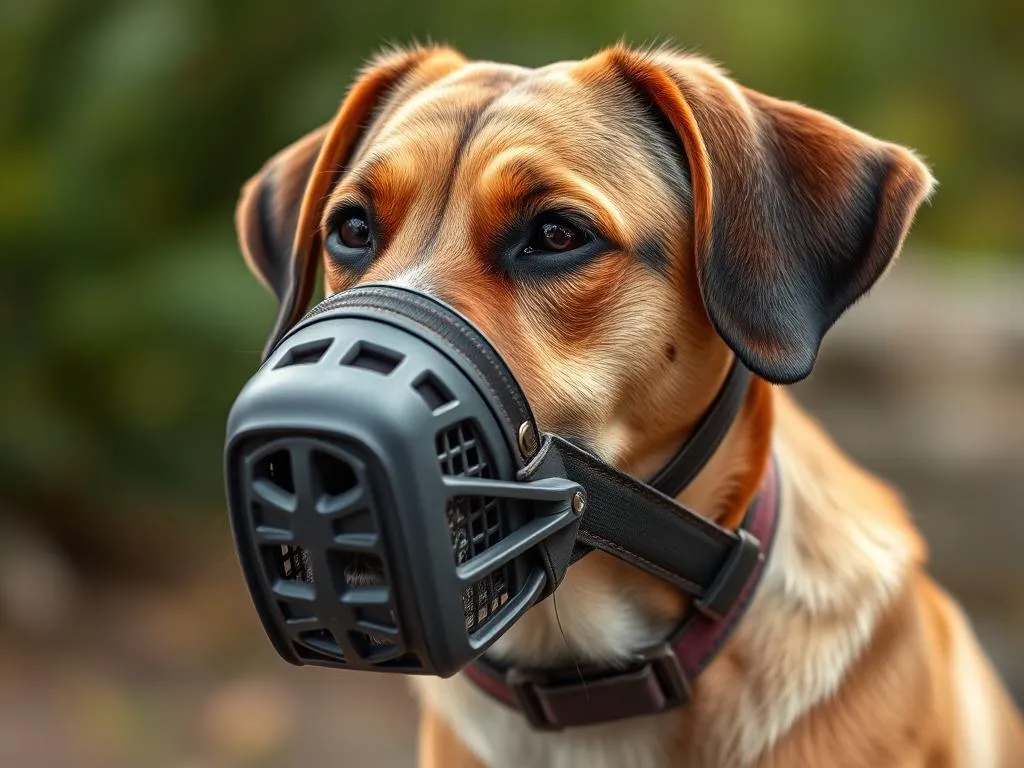
Understanding dog behavior and safety is essential for any responsible pet owner. Muzzles often come up in discussions about dog training and safety, but many dog owners may be unsure about why and when dogs should wear a muzzle. This post aims to clarify the purpose of muzzles, address common misconceptions, and provide guidance on when and how to use them effectively.
Understanding Muzzles
What is a Muzzle?
A muzzle is a device that fits over a dog’s snout, preventing them from biting or chewing. While some might think of muzzles as devices of punishment, they serve several practical purposes in dog care. There are various types of muzzles available, including:
- Basket Muzzles: Made of sturdy materials, these allow for panting and drinking while preventing biting. They are often recommended for longer durations.
- Soft Muzzles: Typically made from fabric, these are more comfortable but can restrict a dog’s ability to pant. They are best used for short-term situations.
- Plastic Muzzles: These are lightweight and often used for training purposes but can be uncomfortable for extended wear.
Understanding the different types can help you choose the best option for your dog’s needs.
Common Misconceptions about Muzzles
Many misconceptions surround the use of muzzles. One prevalent belief is that muzzles signify aggression. In reality, muzzles are tools for managing safety, not indicators of a dog’s temperament.
Another common misconception is that muzzling a dog is cruel. While some dogs may initially resist wearing a muzzle, training and positive reinforcement can help them adjust. Muzzles are often necessary for responsible pet ownership, ensuring both the dog’s safety and the safety of others.
Reasons for Using a Muzzle
Safety for Other Animals and People
One of the primary reasons for using a muzzle is safety. For aggressive or fearful dogs, muzzles can prevent bites during interactions with other dogs or people. This is especially important in public spaces or when encountering unfamiliar situations.
Using a muzzle can also allow a dog to socialize in controlled environments, helping to ease tension and protect everyone involved. It’s a significant step toward responsible dog ownership.
Safety for the Dog
Muzzles aren’t just about protecting others; they also ensure the safety of the dog. Dogs are naturally curious and may ingest harmful substances, whether it’s trash on a walk or medication left unattended. A muzzle can prevent this dangerous behavior, keeping them safe from potential poisoning or injury.
Additionally, visits to the vet or groomer can be stressful for dogs. A muzzle can provide peace of mind for both the pet owner and the professionals handling the dog, reducing the risk of biting during stressful procedures.
Behavioral Training and Management
Muzzles can also be an effective tool in behavioral training and management. For reactive dogs, a muzzle can allow for controlled exposure to triggers without the risk of biting. This can be particularly useful during training sessions, helping the dog learn to remain calm in various settings.
Using a muzzle in conjunction with training techniques can create a safe environment for both the dog and the trainer, fostering a more productive learning experience.
When to Use a Muzzle
Situations Requiring a Muzzle
There are specific situations where using a muzzle is advisable:
- Vet Visits and Grooming Appointments: These experiences can be stressful for dogs. A muzzle can prevent biting during examinations or grooming, ensuring everyone’s safety.
- Public Places with High Distractions: In crowded parks or busy streets, a muzzle can help manage dogs that may become overly excited or anxious, reducing the risk of biting.
- Introducing New Pets or People: When bringing a new pet into the home or introducing your dog to new people, a muzzle can provide an added layer of safety.
Specific Cases
Some dogs may require muzzles more than others:
- Dogs with a History of Aggression: If a dog has previously shown aggressive behavior, a muzzle can help prevent incidents while working on behavior modification.
- Dogs with Anxiety or Fear-Based Issues: For dogs that react poorly in certain situations due to fear or anxiety, using a muzzle can help manage their responses while providing comfort.
- Elderly Dogs Needing Additional Care: Older dogs may become more irritable during vet visits. A muzzle can help ensure safety for both the dog and the vet.
Choosing the Right Muzzle
Factors to Consider
When selecting a muzzle, consider various factors to ensure the best fit for your dog:
- Dog Size and Breed Considerations: Muzzles come in various sizes. Make sure to select one that fits your dog’s specific size and breed for maximum comfort and effectiveness.
- Comfort and Fit of the Muzzle: A snug yet comfortable fit is crucial. If a muzzle is too tight, it can cause discomfort, while one that’s too loose may not be effective.
- Material and Design for Safety and Breathability: Choose a muzzle made from durable materials that allow for airflow. This is particularly important for longer wear periods.
How to Properly Fit a Muzzle
Fitting a muzzle properly is key to its effectiveness. Here’s a step-by-step guide:
- Measure Your Dog’s Snout: Use a soft measuring tape to measure the circumference of your dog’s snout and the length from the eyes to the tip of the nose.
- Choose the Right Size: Refer to the manufacturer’s sizing guide to select the appropriate muzzle based on your measurements.
- Adjust Straps: Ensure that the muzzle fits snugly but allows space for your dog to comfortably open their mouth slightly.
- Allow Time for Adjustment: Gradually introduce the muzzle to your dog, allowing them to become accustomed to it without forcing it on them.
Training Your Dog to Wear a Muzzle
Introduction to the Muzzle
Training your dog to wear a muzzle should be a gradual process. Start with simple desensitization techniques:
- Introduce the Muzzle: Show the muzzle to your dog without putting it on immediately. Let them sniff it and explore it.
- Positive Reinforcement: Reward your dog with treats and praise when they show curiosity or calm behavior around the muzzle.
Building Comfort and Trust
To ensure a positive experience, focus on building comfort and trust:
- Make it Fun: Incorporate the muzzle into playtime, rewarding your dog each time they wear it, even for a short period.
- Avoid Negative Associations: Never use the muzzle as a punishment. Ensure that your dog associates wearing it with good outcomes, such as treats or play.
Legal and Ethical Considerations
Local Laws and Regulations
Muzzle laws vary by region. In some places, certain breeds may be required by law to wear muzzles in public. It’s essential to familiarize yourself with local regulations to ensure compliance and promote safety.
Ethical Considerations of Muzzling
Using a muzzle should always come from a place of responsibility. It’s crucial to balance safety with comfort for the dog. Ethical pet ownership involves understanding your dog’s needs and ensuring they are treated humanely while also keeping others safe.
Conclusion
Muzzles can be valuable tools for dog owners, serving to protect both the dog and those around them. Understanding why and when dogs should wear a muzzle is essential for responsible pet ownership. With the right approach, muzzles can enhance the safety and comfort of your dog, allowing for enjoyable experiences in various situations.
Incorporating a muzzle into your dog care routine may seem daunting, but with patience and proper training, it can become a natural part of your dog’s life. Ultimately, responsible pet ownership means ensuring the safety of all involved while fostering a happy and healthy environment for your furry friend.









